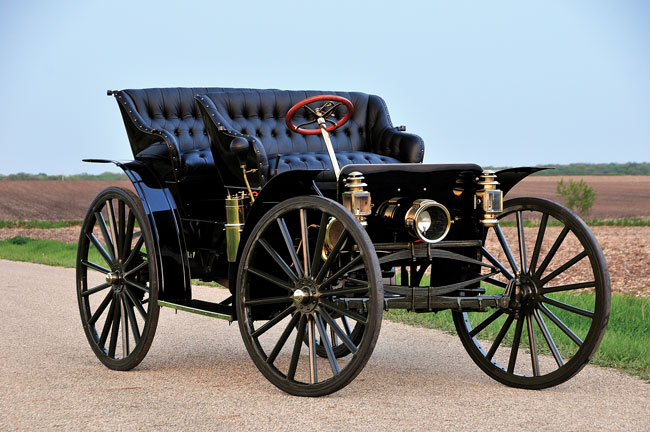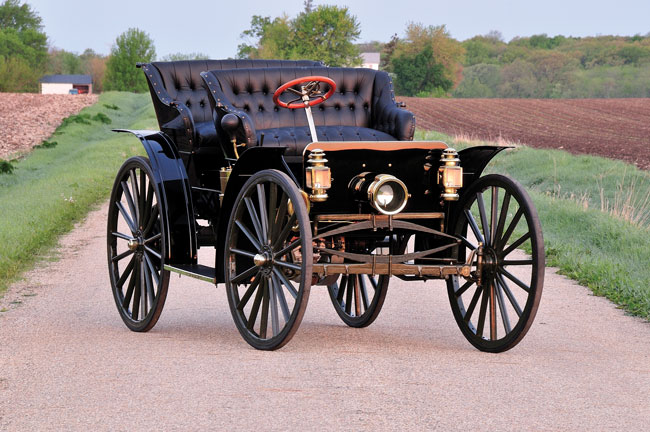Blog

Throwback Thursday: 1909 Economy
The 107-cid horizontally opposed, twin-piston engine is air cooled and produces 22 hp; it remains original except for the valve springs and piston rings. The crank and cam, as well as all the babbit, was within tolerance. The engine restorer mentioned he had seen engines from the ’70s in worse condition. There was absolutely no rust in the crankcase. The intake and exhaust manifolds and muffler were all reused. The muffler was wrapped with a 20-gauge sleeve to seal pinhole leaks in the original.
The car is simple to operate. The crank is on the side and spins counterclockwise as opposed to most cars that crank from the front and clockwise. Since the carburetor is on the opposite side of the crank, an assistant is needed. Once the gas is turned on and the coil box is in the “off” position, the assistant places their hand over the carburetor intake. The engine is cranked through about two revolutions and floods the long intake manifold. The spark is then retarded and the gas adjusted to half throttle at the steering wheel. Then, with 3/4 turn of the crank, it fires right off. Occasionally in cold weather, the assistant must hold their hand over the intake to imitate a choke until the engine is warm.
Driving is simple except you are on the right and up 4-1/2 feet in the air and steering 38-inch wheels. The left pedal is depressed to put the car in low gear at the planetary. High gear is achieved by throwing the lever to the right all the way forward as the driver releases his foot from the low speed pedal as the car is moving. However, watch out, the high speed is direct drive to the crankshaft! The reverse gear is achieved by pulling back on the handle to the right, which tightens the other band on the planetary. The brakes are rear expanding shoes and are of little use for stopping.
Souce (Oldcarsweekly).

Posted on July 2017,27 // Author: Admin